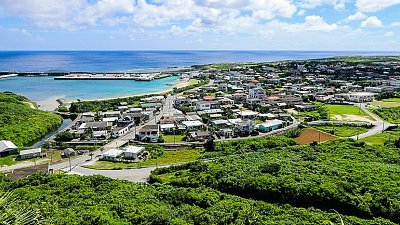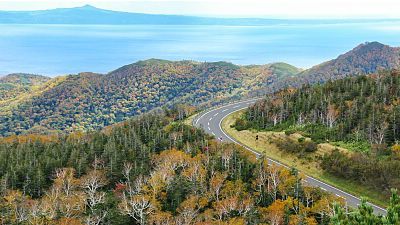Kushiro

Winter in Japan very often splits people into two camps: those who love the cold and winter activities, and those who stay indoors and wish for warm weather to arrive sooner. I waver between the two on most days but definitely go for the outdoors when there are views and experiences to be had.
This winter, I headed to Kushiro, a coastal town on the eastern side of Hokkaido to experience a bit of proper cold for a couple of days in February. While winter temperatures closer to the coast are fairly mild, places further inland can get as cold as minus 20 degrees Celsius! Compared to other well visited cities in Hokkaido like Sapporo, Hakodate and Furano, Kushiro gets considerably fewer visitors and consequently, retains an idyllic and rural atmosphere.


On this trip, I spent one day exploring the city and the next day enjoying the great wintry outdoors. Kushiro is unique in that it offers the typical expansive sweeping views with mountains in the distance that is almost synonymous with Hokkaido, and it also offers a host of winter activities that are not skiing or snowboarding. Fishing, canoeing, snow shoeing are all activities that can be done in the marshland, and delicious local seafood can be enjoyed in the city.



Kushiro City is known for many things, of which the Kushiro Marshland, a national park, and the endangered Japanese red-crowned cranes (tancho) are the most famous. It is said that the city does not get too much snow compared to other cities in Hokkaido as it is close to the sea but as luck would have it, it snowed a couple of days before I arrived as well as on my day of arrival. This meant that I arrived to a fair bit of snow, although I've been told that it is still considerably less compared to the average year.
To get around this trip, I decided on getting a rental car instead of relying on public transport. Note that it is advisable for those not used to snowy winter driving to opt for public transport instead. Kushiro City is walkable and day tour companies often offer pick up from hotels or the nearest train station.


Having almost no knowledge about Kushiro, I decided that the best thing to do would be to hit the city museum on my first day to learn more. The Kushiro City Museum is housed in a Brutalist building and offers three floors of information about the city. Exhibits about the Ainu people and culture, as well as the history, flora and fauna of Kushiro can be seen there. It was quite educational, and I left feeling like I had enough information for a successful trip.





From there, I headed to the popular Washo Ichiba, a fish market most known for its kattedon, a seafood donburi where you get to pick the fresh ingredients to go atop your bowl of rice. Many places offered similar sashimi as well as seasonal seafood to be cooked upon ordering. I got myself a donburi and wished I had a bit more stomach space to try some delicious live crabs which were in season.





The weather didn't look too promising as I left the fish market and I hurried on to catch some Japanese red-crowned cranes. These endangered wild birds can only be seen in Kushiro and nowhere else in Japan. While they can be seen all year round, one of the best times to see them is in winter as they gather at the feeding sites near the city.
I made my way to one of the feeding sites and got my fill of Japanese cranes. I spent some time watching them fly in, hearing their bird calls and generally just pecking about in the snow. Even if you are not a fan of birds, these should not be missed as they looked so graceful and elegant regardless of what they do. For a while, the cold didn't matter while I looked upon the beauty of these wild birds. It wasn't long before the falling snow made visibility very poor, and I had to tear myself away from the tancho and make my way back to my hotel for the night before it got bad.



The next day, I got up before sunrise for a morning canoe tour. Reservations are recommended for day tours (all through the year) and the availability of English guides depends on the tour operators. The canoe ride was one experience I was looking forward to before arriving in Kushiro. There is no better way to see Kushiro Marshland than from the inside, floating down one of its main river, the Kushiro River (which originates from Lake Kussharo, one of the largest caldera lakes in Japan). The idea was to hopefully get to see steam rising above the waters or perhaps see diamond dust (the essence of clouds), but alas, it was too warm at minus ten degrees Celsius when I was out there!
Nevertheless, it felt like a different world out in the marshland on the canoe. We floated downstream in the quiet of the morning, listening to the sounds of birds as they got about their day, ice breaking and our oars splashing. As it snowed the previous day, there was lots of snow on the branches of the trees which according to my guide, would all be melted by the end of the day. The early bird does catch the worms and in my case, views.
After canoeing for a little more than an hour, my guide and I went wildlife hunting. Not to kill because that's illegal, but to see with our eyes and shoot with my camera. We passed a number of other fellow wildlife hunters including a television crew, and despite seeing lots of animal tracks, most of them eluded our sights.








To wrap up my trip to Kushiro, I got up close to an operating steam locomotive (SL). The old school SL Fuyu no Shitsugen train only runs for a few weeks in the winter from Kushiro to Shibecha. The one way journey takes about 90 minutes, making four stops along the way, and costs 1890 yen. Note that there is only one round trip a day when the train is in operation.
While I didn't get to ride the train, I managed to get pictures of it as it passed. I was not the only crazy train photographer that day as there were about ten people with me, and apparently, there are also those who hike up the nearby snow-covered hills to get their money shot of the SL train. All I could think as the train passed was how seeing such a retro train did not look out of place in Kushiro but instead this was where it was always meant to be.


Kushiro in the winter felt like a land forgotten, a place marked by its huge marshland not far from the city. Regardless of season, there are lots of activities offered in and around the marshland which contains a unique eco-system that provides for its wildlife. There were views to die for, from the canoe, while wildlife hunting and even when driving between places. You'd be missing out on an abundance of wildlife and nature if Kushiro is not on your Japan travel bucket list.





Get There
Kushiro Airport is about a two-hour flight from Tokyo's Haneda Airport. From the airport, buses make the trip into the city center in about 50 minutes and for 940 yen. Bus departures are timed to flight arrivals. Alternatively, a rental car is a convenient way to access the area and beyond. Rental car outlets are available at the airport.





